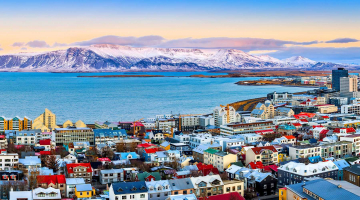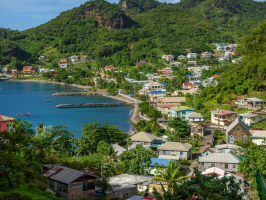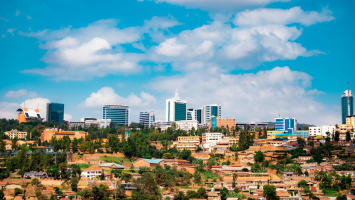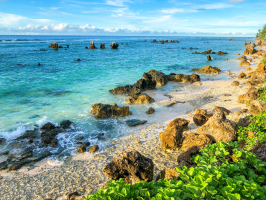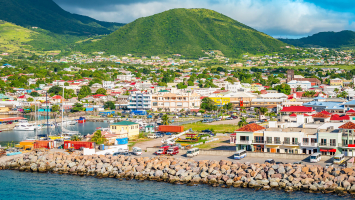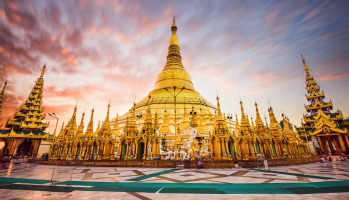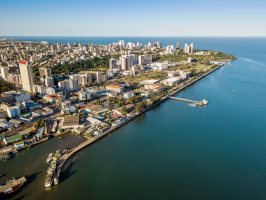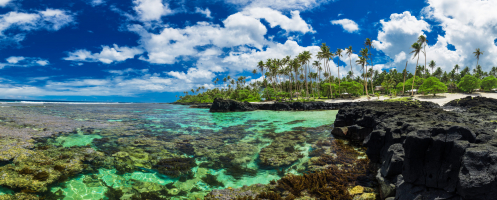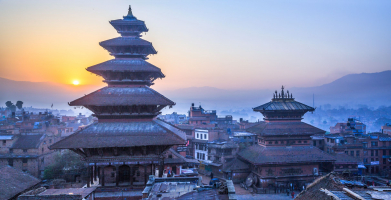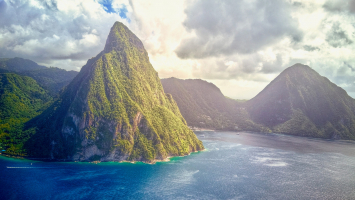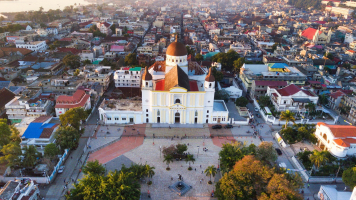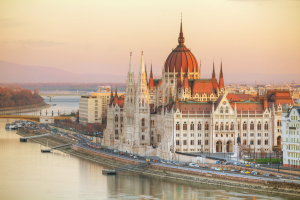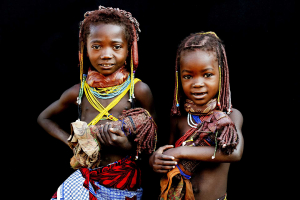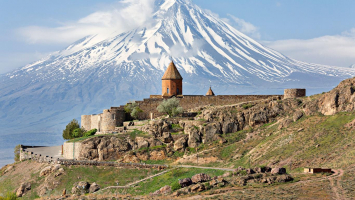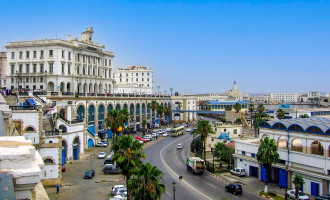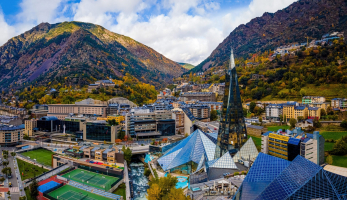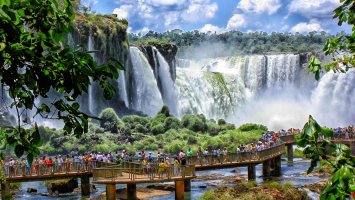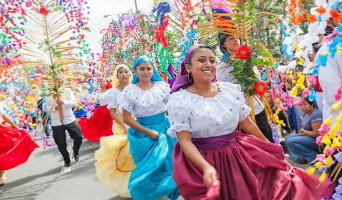Top 10 Unique Cultural Characteristics In Honduras
Honduras, officially the Republic of Honduras, is a Central American country. Before the Spanish colonization in the sixteenth century, Honduras was home to ... read more...several important Mesoamerican cultures, most notably the Maya. Honduras has a machismo vibe, especially in the "wild east" departments of Olancho and Gracias a Dios. Cowboy culture reigns supreme, and blood feuds are still common. But it's not all macho nonsense. Although mestizo latin-ness predominates in Honduras, the country is influenced by other cultures as well. Here are some of the Unique Cultural Characteristics In Honduras that you can learn more about.
-
Honduras has ten languages, according to the world's Ethnologue. There are five indigenous languages that are widely spoken. Garifuna, Miskito, Sumo, Pech, and Jicaque are among them. This is one of the Unique Cultural Characteristics In Honduras that you should know. The Garifuna language is spoken by approximately 100,000 Hondurans. Garifuna is related to the Arawakan dialect and includes Carib and European borrowings.
Miskitu (Miskito) is a Mesoamerican ethnic group's language. Miskito is spoken by approximately 29,000 Hondurans. The Paya languages include Pech. It has its origins in Chibcha, but linguists consider it to be an isolated language. People who speak Pech refer to themselves as "pech," which means "people." People who speak other languages, on the other hand, are referred to as "pech-akuá," which translates as "other people." Pech is spoken by less than 1,000 people in Honduras. The Sumo are a South American people.
Honduras' official language is Spanish. Honduran Spanish is a dialect of Central American Spanish. The country's most widely spoken language, spoken natively by the vast majority of citizens regardless of ethnicity. Many Honduran professionals and business executives speak English, and many high-level government officials and private-sector leaders received their education in the United States. Furthermore, Spanish is the language of instruction in educational institutions. Honduran Spanish is similar to Spanish spoken in El Salvador and Nicaragua. In the Bay Islands, English is widely spoken.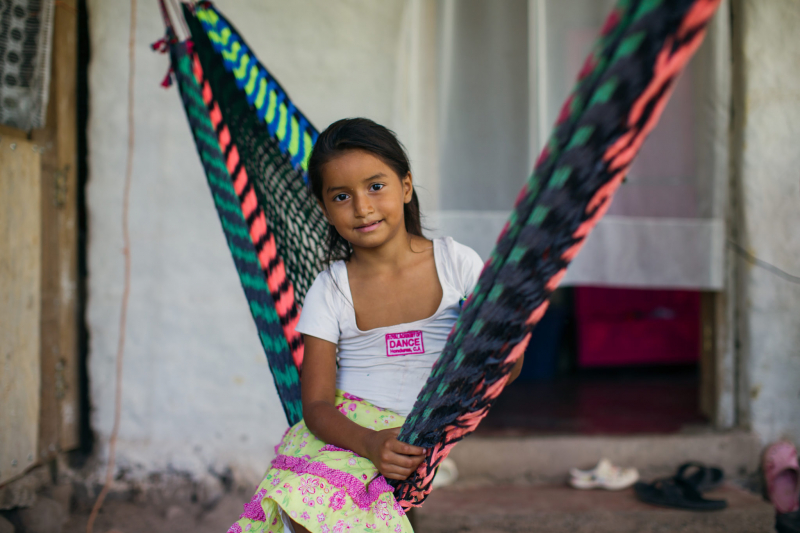
https://www.waterforpeople.org/ 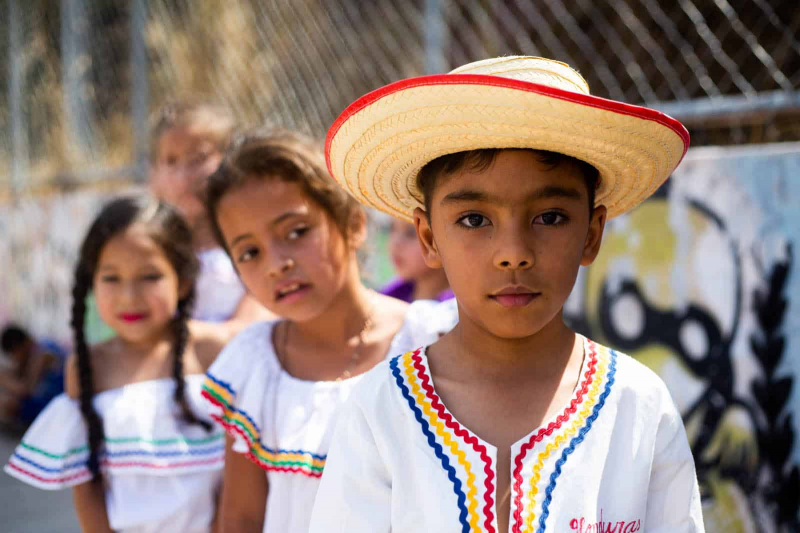
https://blog.compassion.com/ -
According to a 2017 estimate, Christianity is the most common religion in Honduras, accounting for 87% of the total population. The country is secular, and religious freedom is guaranteed by the constitution. The pre-Hispanic peoples of Honduras were mostly polytheistic Maya and other native groups. The Spanish Empire introduced Roman Catholicism in the 16th century, and it now accounts for 46% of the population. Protestantism is the religion of 41% of the country's population.
The major religious groups in recent years have been Roman Catholic, Episcopal, Lutheran, Jehovah's Witness, Mennonite, approximately 300 evangelical Protestant groups, and the Church of Jesus Christ of Latter-day Saints (Mormon). The Catholic Church in Honduras is divided into eight dioceses, which are part of the Conference Episcopal of Honduras: Tegucigalpa, Comayagua, Choluteca, Olancho, Yoro, San Pedro Sula, Trujillo, and Copán.
Three confederacies govern the Protestant churches in Honduras: the Pastors' Association of Honduras, the Evangelical Brotherhood of Honduras, and the Apostolic Network of Honduras. The "Abundant Life," "Living Love," and "Great Commission Churches" are among the most prominent evangelical churches in the country. A growing number of evangelical churches are not affiliated with any denomination. The evangelical leadership is represented by the National Association of Evangelical Pastors. Muslims and Jews are present in small numbers. Tegucigalpa and San Pedro Sula both have mosques and synagogues.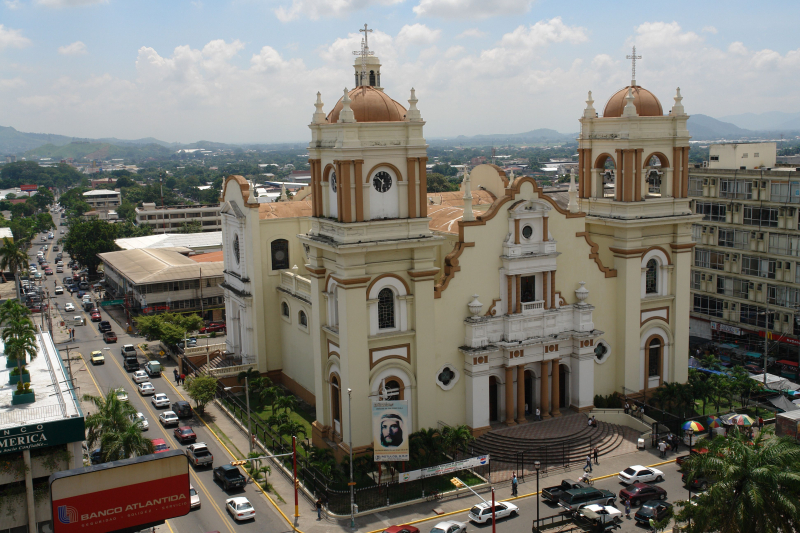
https://themelisting.com/ 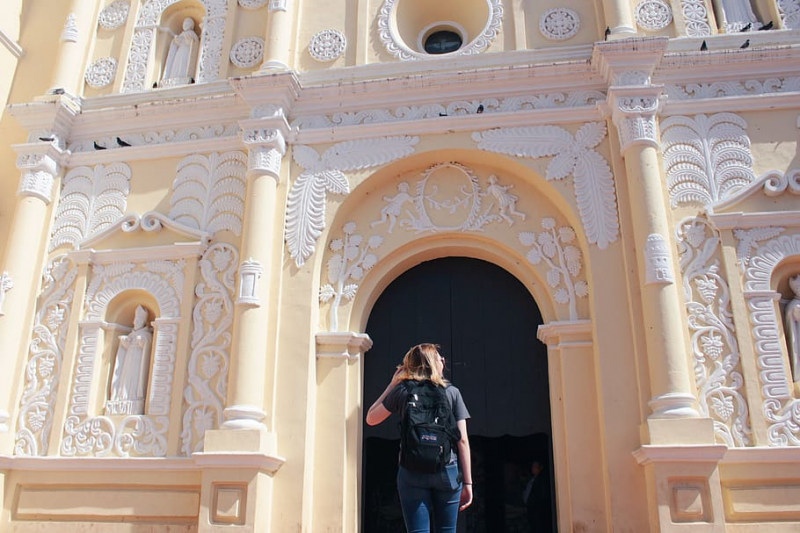
https://www.wallpaperflare.com/ -
Art is such an important part of Honduras' culture. The majority of the art is created by contemporary Honduran painters and depicts aspects of Honduran life. Virginia Castillo, Marisol Rodriguez, and La Gitana are among the Honduran artists.
The majority of Honduran art is inspired not only by Mesoamericans, but also by African American slaves, the climate, mountains, and the vibrant unique people. The Garifuna are a vibrant and distinct people in Honduras culture. The Garifuna are mixed-race descendants of West Africans, Central Africans, Island Caribs, and Arawaks.
Their culture revolves around dance and music. They are now concentrated on Honduras' main island of Roatan, where a population of 100,000 people can be found. They have had such an impact on Honduras that murals of these people dancing can be found on the country's walls. They are usually of deceased family members dancing or singing in brightly colored outfits outside among bright green palm trees.
José Antonio Velásquez is the most well-known Honduran painter. Carlos Garay and Roque Zelaya are two other important painters. Lucila Gamero de Medina, Froylán Turcios, Ramón Amaya Amador and Juan Pablo Suazo Euceda, Marco Antonio Rosa, Roberto Sosa, Eduardo Bähr, Amanda Castro, Javier Abril Espinoza, Teófilo Trejo, and Roberto Quesada are some of Honduras' most notable writers.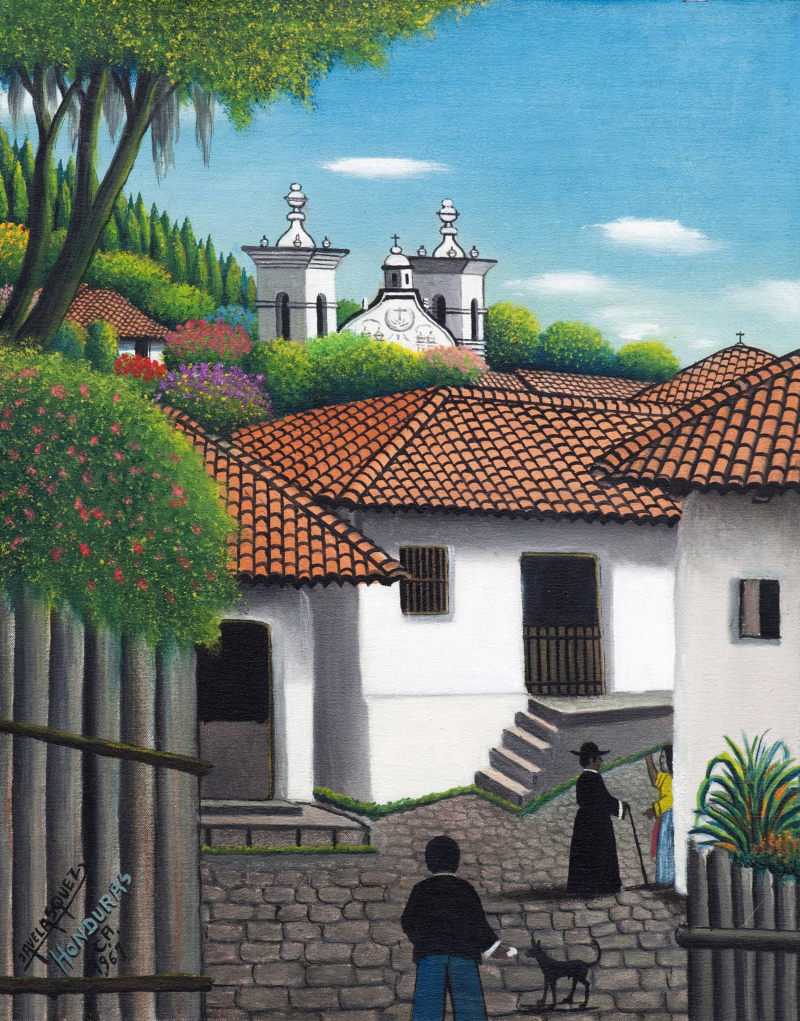
https://arthistoryproject.com/ 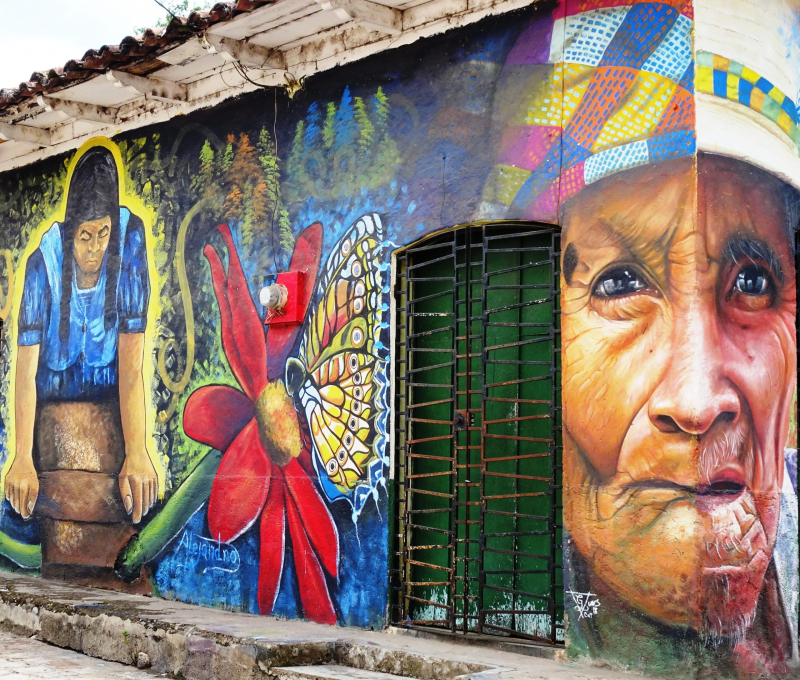
https://www.thecultureist.com/ -
Honduran literature refers to literature produced in Honduras. Honduras' literary history intersects with aspects of the political and socioeconomic environment that have long been present in Honduran history. Salgado claims in the Handbook of Latin American Literature that the birth of Honduran literature begins with Fray Jose Trinidad Reyes, who founded Honduras' first university. Sadly, the proliferation seen in other Central American countries did not occur in Honduras. Furthermore, due to the country's political unrest for much of its history, much of the literature remains unpublished and thus unknown.
In fact, Romanticism arrives in Honduras later than most other literature in the world, first appearing in the late nineteenth century in the work of Ramon Rosa. When Romanticism arrives in Honduras, the country's literature takes off. Honduran literature, influenced by the rest of Spanish America, experiments with Modernism; authors from this generation include Juan Ramon Molina and Froyolan Turcios. Following this literary generation was a group of writers with a creolist style who sought a Honduran identity. In the years since, several generations of authors have emerged, each distinguished by their similarities and time periods.
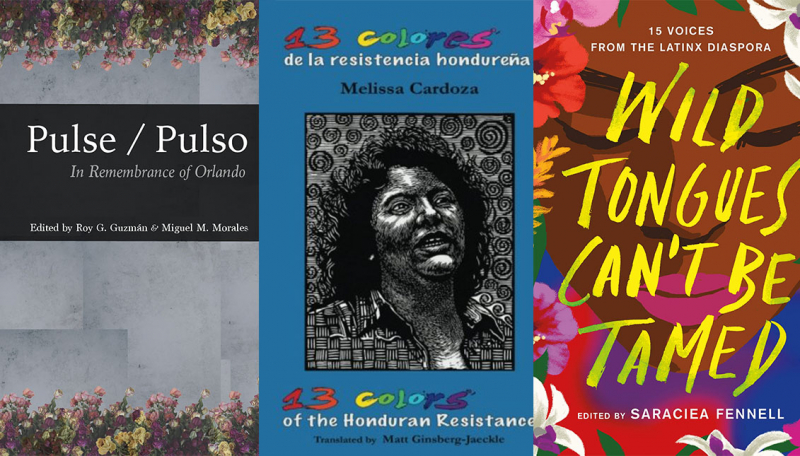
https://aldianews.com/ 
https://ayearofreadingtheworld.com/ -
Honduras' music is diverse. Punta is the main "ritmo" of Honduras, with other music ranging from Paranda, Bachata, Caribbean salsa, cumbia, reggae, merengue, soca, calypso, dancehall, and reggaeton, to Mexican rancheras heard in the country's interior. Guillermo Anderson and Polache are two of the most well-known musicians. Banda Blanca is a well-known music group in Honduras and around the world. It is considered as one of the Unique Cultural Characteristics In Honduras.
People enjoy dancing to the complex drumbeats. It may be difficult to get used to due to the unique sounds, but it is not difficult to dance. Dancing Punta entails moving the hips in a circular motion from left to right. As the hips move, the toes come into contact with their points and aid in the movement. There are fast-paced songs that add to the complexity of the dance, but it is still enjoyable to move to.
Guitar, marimba, and other instruments are used in folk music. Punta is well-known in Honduras. La Ceiba and Cand are two popular folk songs. In Comayagua, there is a national orchestra called the Orquesta Sinfónica Nacional de Honduras.Other popular styles include salsa, reggae, merengue, and reggaeton. Mexican rancheras is popular in Honduras' interior rural areas. Tegucigalpa, the country's capital city, is a hotspot for modern Honduran music. The Honduran government promotes folk music shows. This music is performed with marimba, guitar, and other instruments.
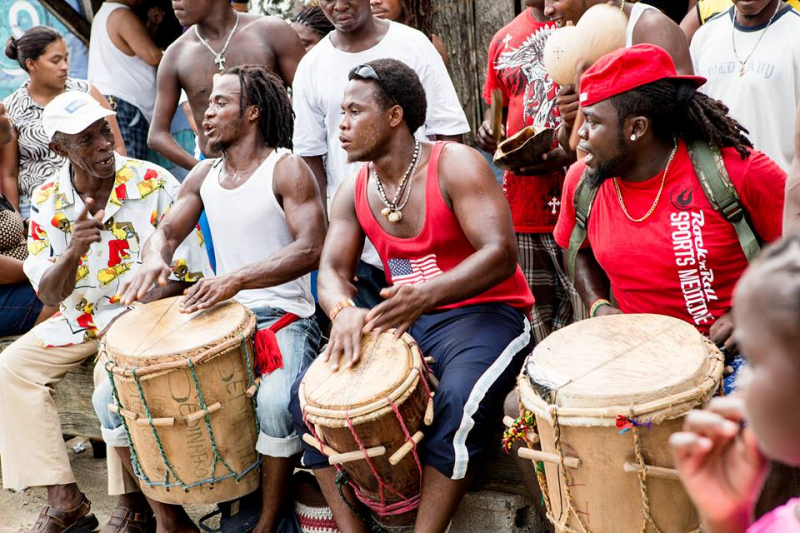
https://chabilmarvillas.com/ 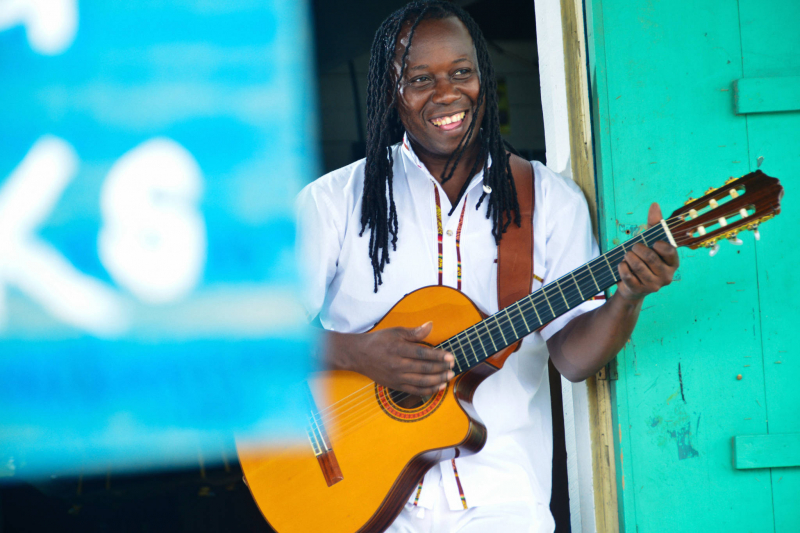
https://beehy.pe/ -
Honduran public holidays are centered on Christianity and the commemoration of historical events. Each holiday is significant to many families across the country. They are frequently observed with extended family members and friends. Parades and processions are held from early morning to late afternoon or evening on a few of the most important holidays, such as Independence Day and Holy Week.
Honduras' national holidays include Honduras Independence Day on September 15 and Children's Day or Da del Nio, which is celebrated on September 10 in homes, schools, and churches; on this day, children receive gifts and have parties similar to Christmas or birthday celebrations. Piatas can be found on the streets of some neighborhoods. Easter, Maundy Thursday, Good Friday, Day of the Soldier, Christmas, El Dia de Lempira (20 July), and New Year's Eve are other holidays.
The celebrations for Honduras' Independence Day begin early in the morning with marching bands. Each band is dressed differently and includes cheerleaders. On the same day, Fiesta Catracha is held, with traditional Honduran foods such as beans, tamales, baleadas, cassava with chicharrón, and tortillas available.
On Christmas Eve, people gather with their families and close friends for dinner before exchanging gifts at midnight. At midnight, fireworks are seen and heard in some cities. On New Year's Eve, there is food and "cohetes," as well as fireworks and celebrations. Birthday parties are also fun because they include piatas filled with candy and surprises for the kids.
La Ceiba Carnival is held in the second half of May in La Ceiba, a city on the north coast, to commemorate the day of the city's patron saint, Saint Isidore. People from all over the world come to celebrate for a week. Every night, a small carnaval takes place in a nearby neighborhood. On Saturday, there will be a large parade with floats and displays featuring people from various countries. This celebration is accompanied by the Milk Fair, to which many Hondurans flock to display their farm products and animals.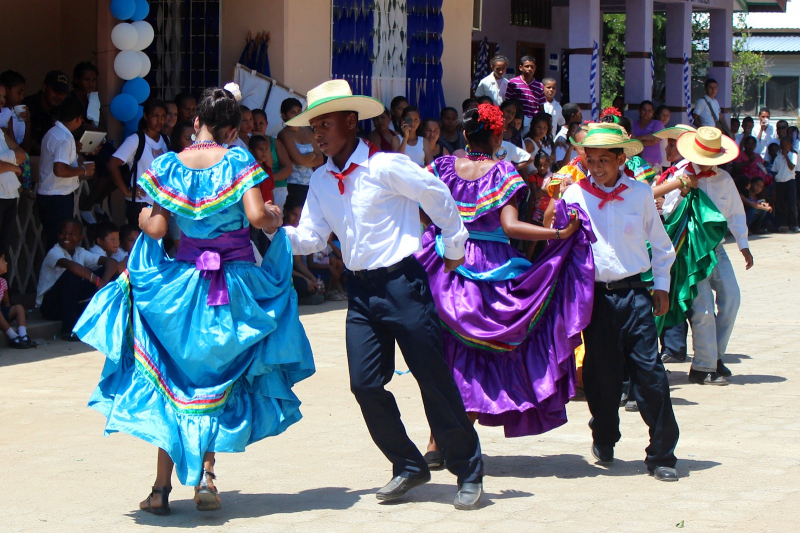
http://mdbloomie.blogspot.com/ 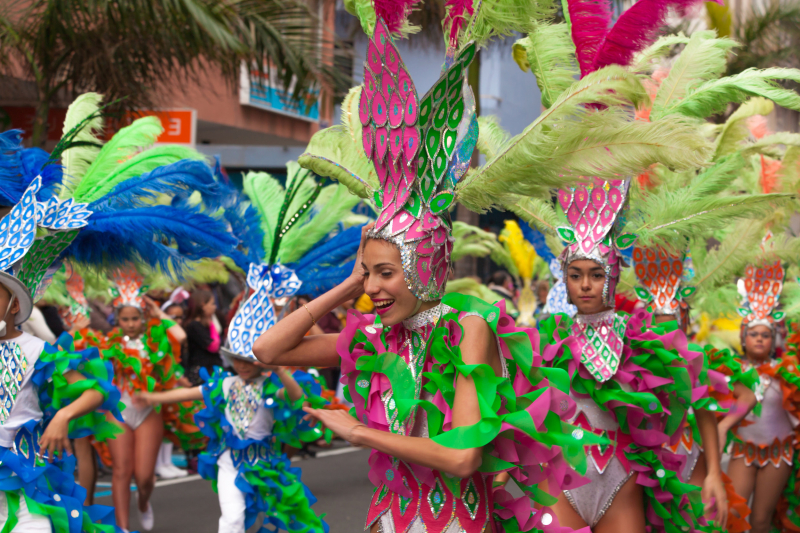
https://www.losangelescarnival.com/ -
Honduras' flag is made up of three equal horizontal stripes. The upper and lower blue stripes represent the Pacific Ocean and the Caribbean Sea, respectively. White is the central stripe. It contains five blue stars representing the five states of the Central American Union. Honduras, located in the center of the Central American Union, is represented by the middle star.
In 1945, the coat of arms was established. It is an equilateral triangle with a volcano at the base between three castles and a rainbow and the sun shining above it. The triangle is placed on an area that represents being surrounded by both seas. Around all of this is an oval with the words "Republic of Honduras, Free, Sovereign, and Independent" in gold lettering.
The "National Anthem of Honduras" is the result of a competition held in 1914 during Manuel Bonilla's presidency. The anthem was eventually written by poet Augusto Coello, with music by German-born Honduran composer Carlos Hartling. The anthem was officially adopted on November 15, 1915, during Alberto de Jess Membreo's presidency. A choir and seven stroonduran perform the anthem. This things can be seen as one of Unique Cultural Characteristics In Honduras.
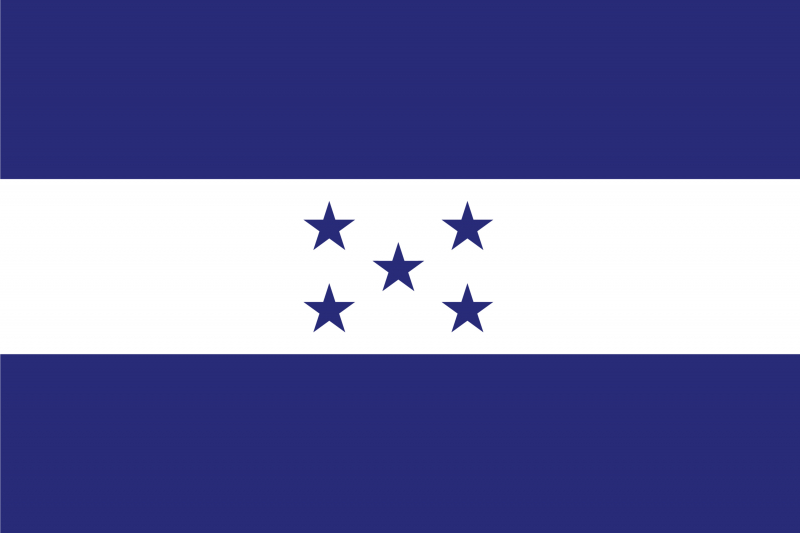
https://www.worldatlas.com/ 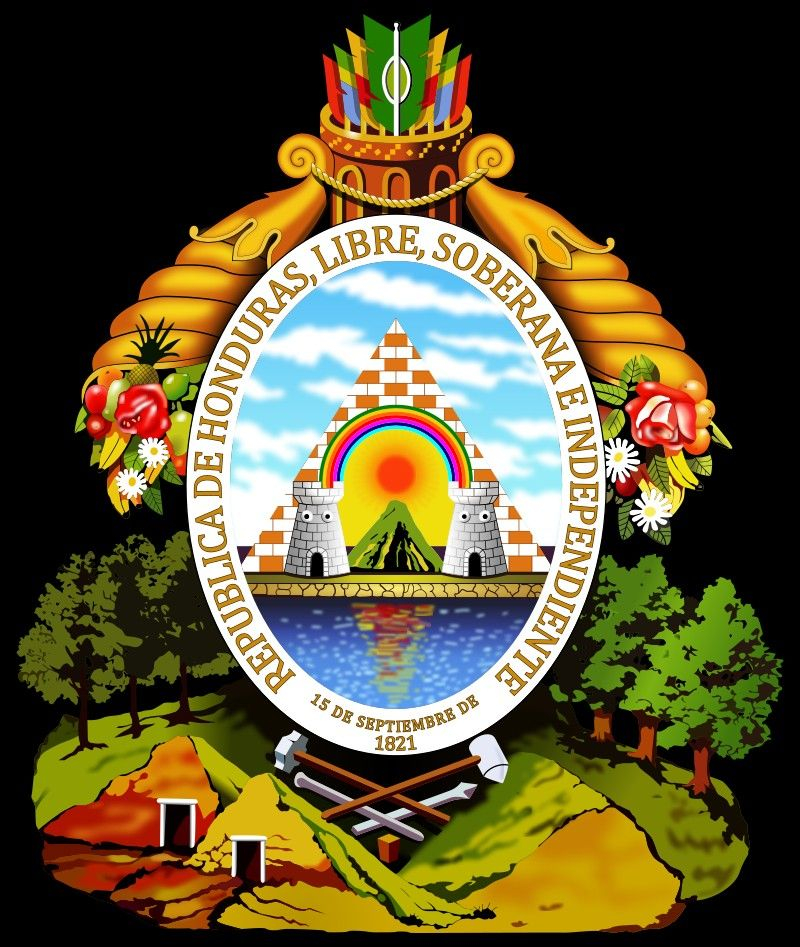
https://www.pinterest.com/ -
Association football is the most popular sport in Honduras. Honduras' football governing body is the Federación Nacional Autónoma de Ftbol de Honduras. Honduras has competed in the Summer Olympics eight times and in the Winter Olympics once, in 1992. Association football is the most popular sport among Hondurans; the country arrived in the early twentieth century, as did many others, until it was properly organized and the Honduras national football team was formed in the early 1960s. Honduras has participated in three World Cups: 1982 in Spain, 2010 in South Africa, and 2014 in Brazil.
Baseball is Honduras's second most popular sport. Honduras' first international competition was the Baseball World Cup, which at the time was the most prestigious global competition. The country lacks a baseball division, most likely due to the lack of international competition since 1973.
Chess has been played in Honduras since the colonial era; the first national league of chess was the "Liga Sanpedrana de Ajedrez" founded in 1973; the National Federation of Chess of Honduras was founded in 1993. Among the notable chess players in Honduras is Ricardo Urbina, the first national chess player to achieve the status of International Master in 2004. (IM). Tennis, baseball, swimming, and American football are also popular in Honduras.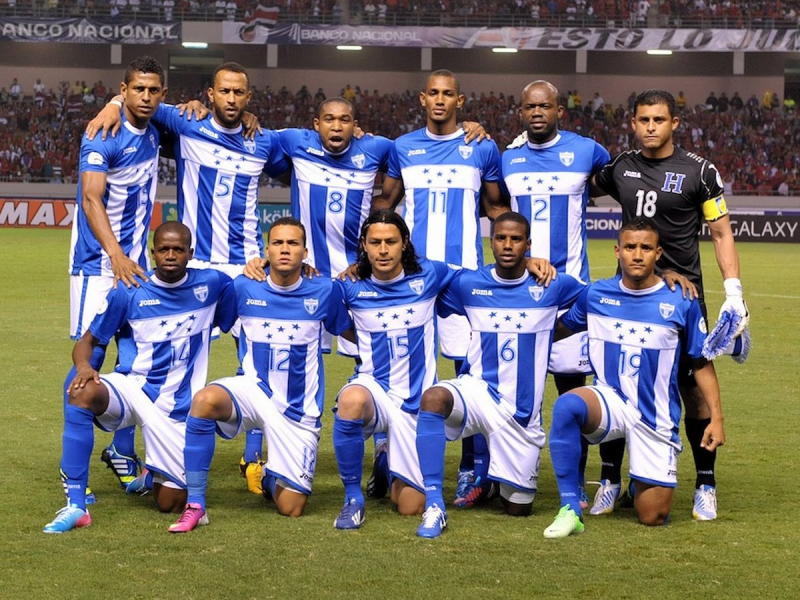
https://www.irishmirror.ie/ 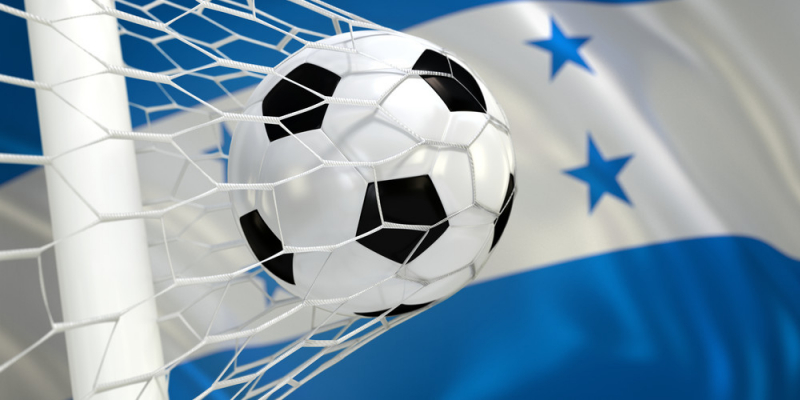
https://sbcamericas.com/ -
Men and urban women should greet each other with a handshake. Upper-class women may kiss both male and female friends on the cheek. Women in rural areas may greet one another by placing one hand on the upper arm of the other. A warm embrace shared by close friends and relatives is known as an abrazo.
When meeting someone for the first time, they are addressed by their official title or Señor, Señora, or Señorita. When meeting someone for the first time, people use usted (the formal version of "you") rather than the more familiar form, t. In small groups, it is customary to greet and say goodbye to each individual. When passing someone on the street, one says "Adiós," which means "Good-bye" in other contexts. Before a meal, or even when passing a table of diners in a restaurant, it is customary to say Buen provecho ("Enjoy your meal").
On Saturday afternoons and Sundays, visitors are common, and they are frequently unannounced. Guests are frequently served juice, soda, or coffee, as well as sweets. Even the most impoverished people will share what they have to make a visitor feel welcome. If a visitor does not want to eat, the host may wrap up some food to send home with the visitor. When invited to someone's home, punctuality is not valued; people frequently arrive well after the stated time.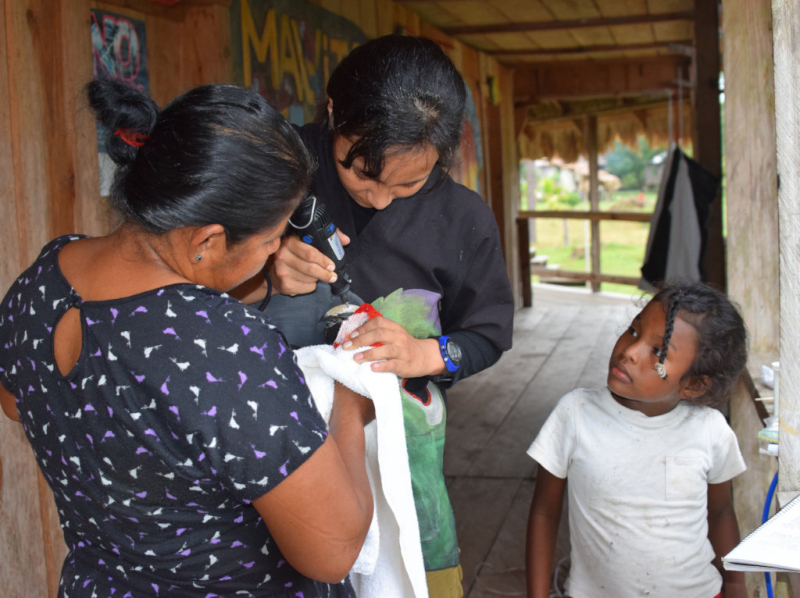
https://www.globalgiving.org/ 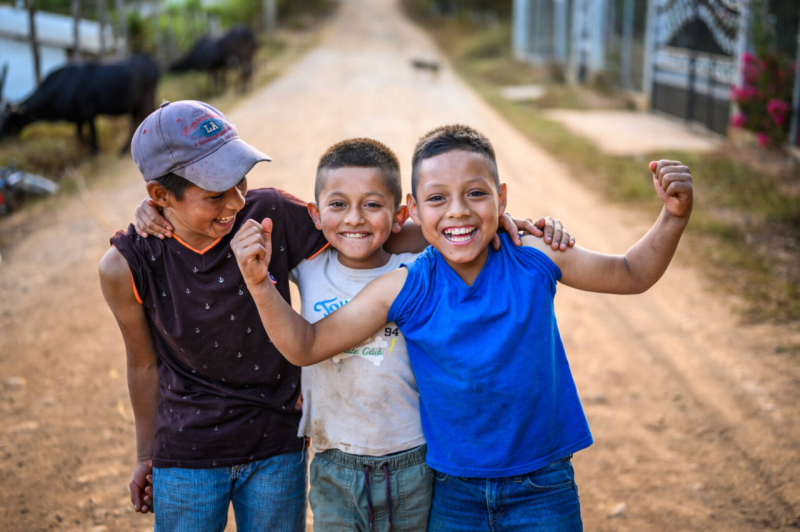
https://www.worldvision.org/ -
When greeting both men and women, handshakes are appropriate, but wait until a woman extends her hand before offering to shake hands. If appropriate, use a title such as doctor or professor. You should even address lawyers by their title, abogado in Spanish. People with no professional titles should be addressed as senor, senora, or senorita. During introductions, use business cards with the Spanish side facing the other person. As a sign of respect, carefully examine the cards handed to you.
Attend meetings on time, even if your hosts may keep you waiting. Meetings typically include informal conversation and do not adhere to strict agendas. According to the US Department of Commerce, expect meetings to last longer than expected, with the overall feel of a social activity rather than a business meeting.
During meetings, the most powerful personalities and business people with the most authority tend to dominate the conversation and make the final decisions in the sales process. Hondurans, on the other hand, expect negotiations to be friendly and do not appreciate hard sells or pressure tactics. They prioritize relationship building and avoid confrontations and conflicts. While negotiations may end with a handshake, a formal written contract is also required.Businessmen and women in Honduras, like their counterparts in the United States, dress conservatively for meetings, with men wearing a dark suit and tie and women wearing a conservative skirt or slacks with a blouse. However, because security is a major issue in Latin American countries, American businesspeople should avoid wearing expensive jewelry. Pickpocketing and armed robberies are common forms of street crime in urban areas. This is considered as one of the Unique Cultural Characteristics In Honduras.
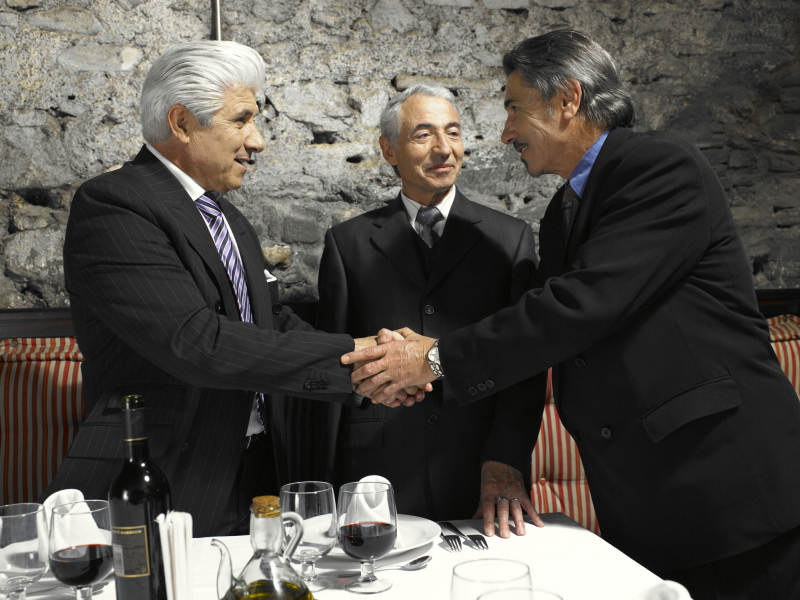
https://careertrend.com/ 
https://www.wework.com/












